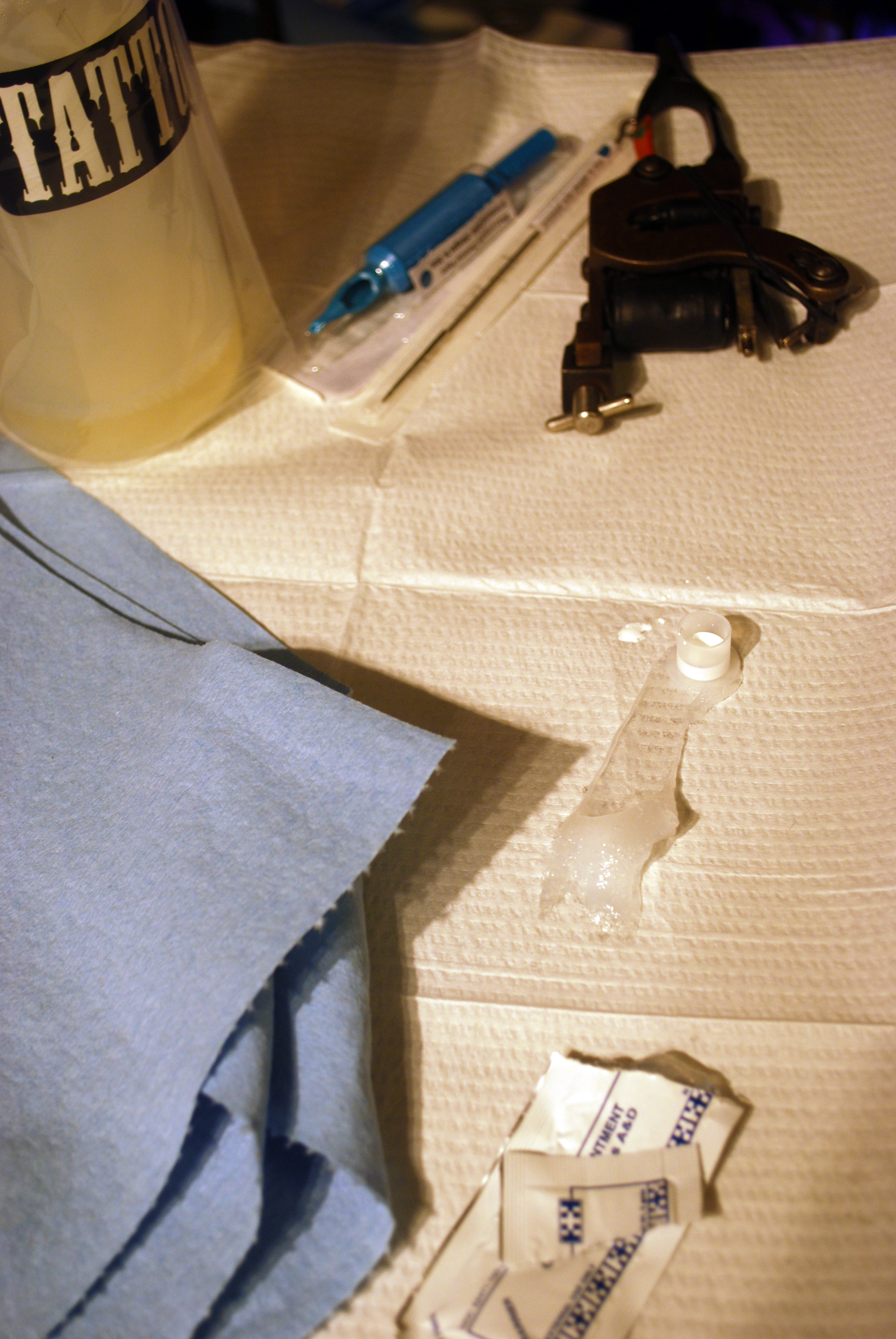the trouble with white.

in the process of setting up for a white ink tattoo.
White ink on the hands.
Plenty of tattooers won’t even do this. For good reason, too! White ink does not heal white. It heals slightly lighter than the skin tone, and often unevenly. It ends up looking a bit like a pale scar, nearly invisible.
Most tattoo artists who will do tattoos in white-ink-only, will not guarantee it, do a free touchup, after it heals. It’s acknowledged that it will not look right when it heals. There’s a very, very rare person for whom it heals and looks ok- but that person is truly rare. I’ve only ever met one, in 16 years of using white alone in tattoos.
All that said, I will do white-ink-only tattoos. And I’ll even do one free touchup, just like with any other tattoo. BUT, I try to make it really clear that it’ll never heal just right, never look perfect. That it’s going to fade into a pale hint of a tattoo, like a scar. Barely there, and that this is likely to happen unevenly, too.
Here are two matching tattoos, freshly tattooed with white-ink-only.



